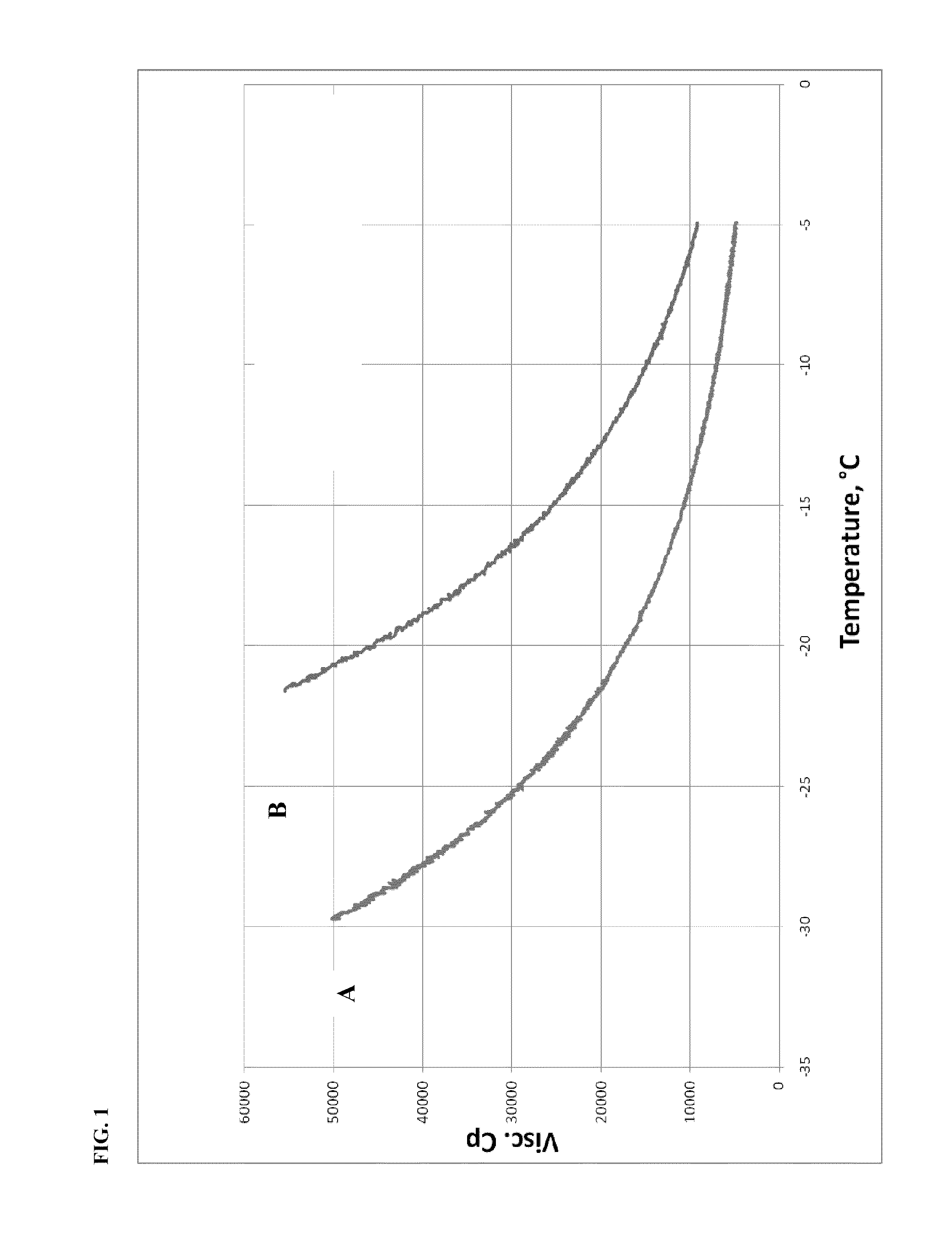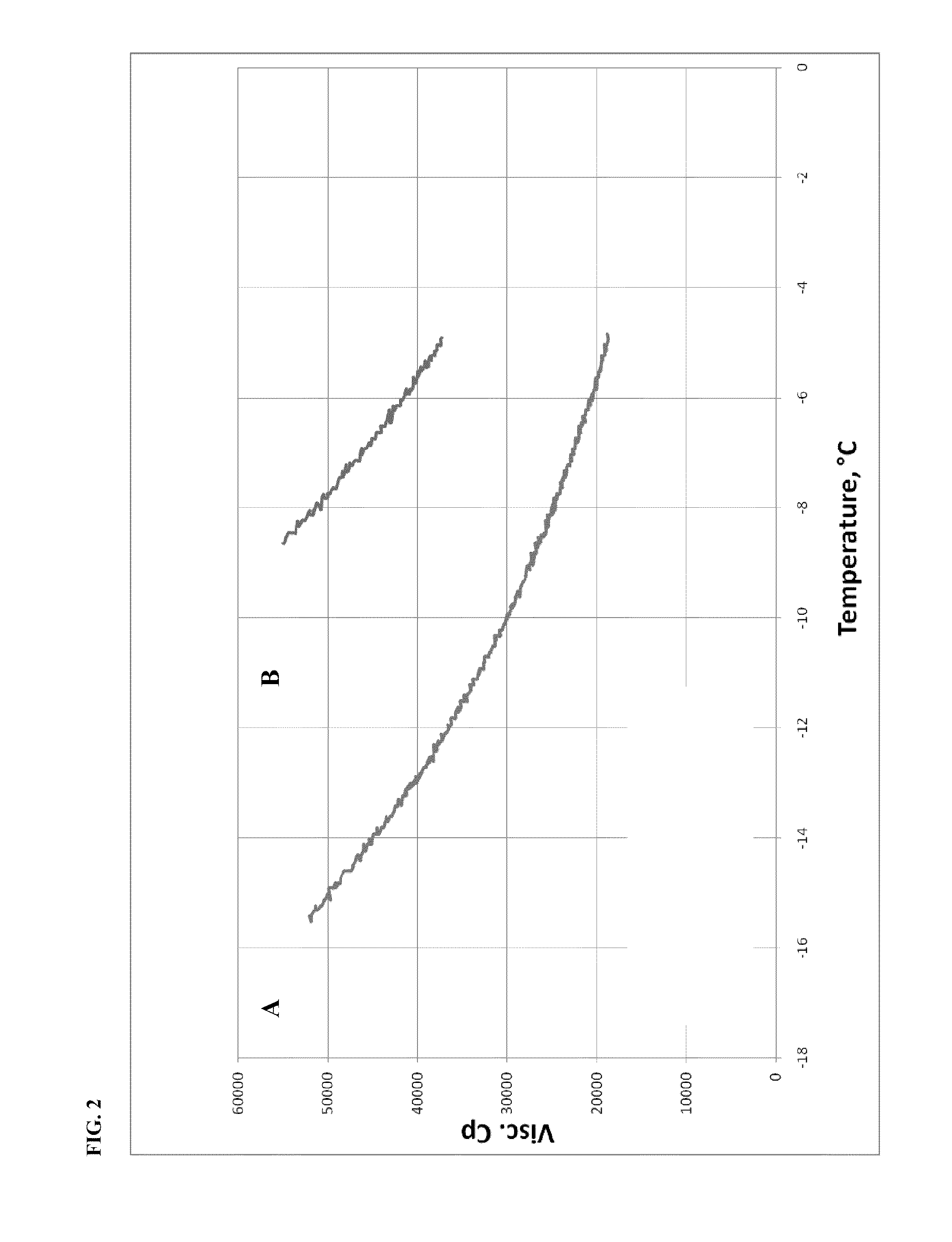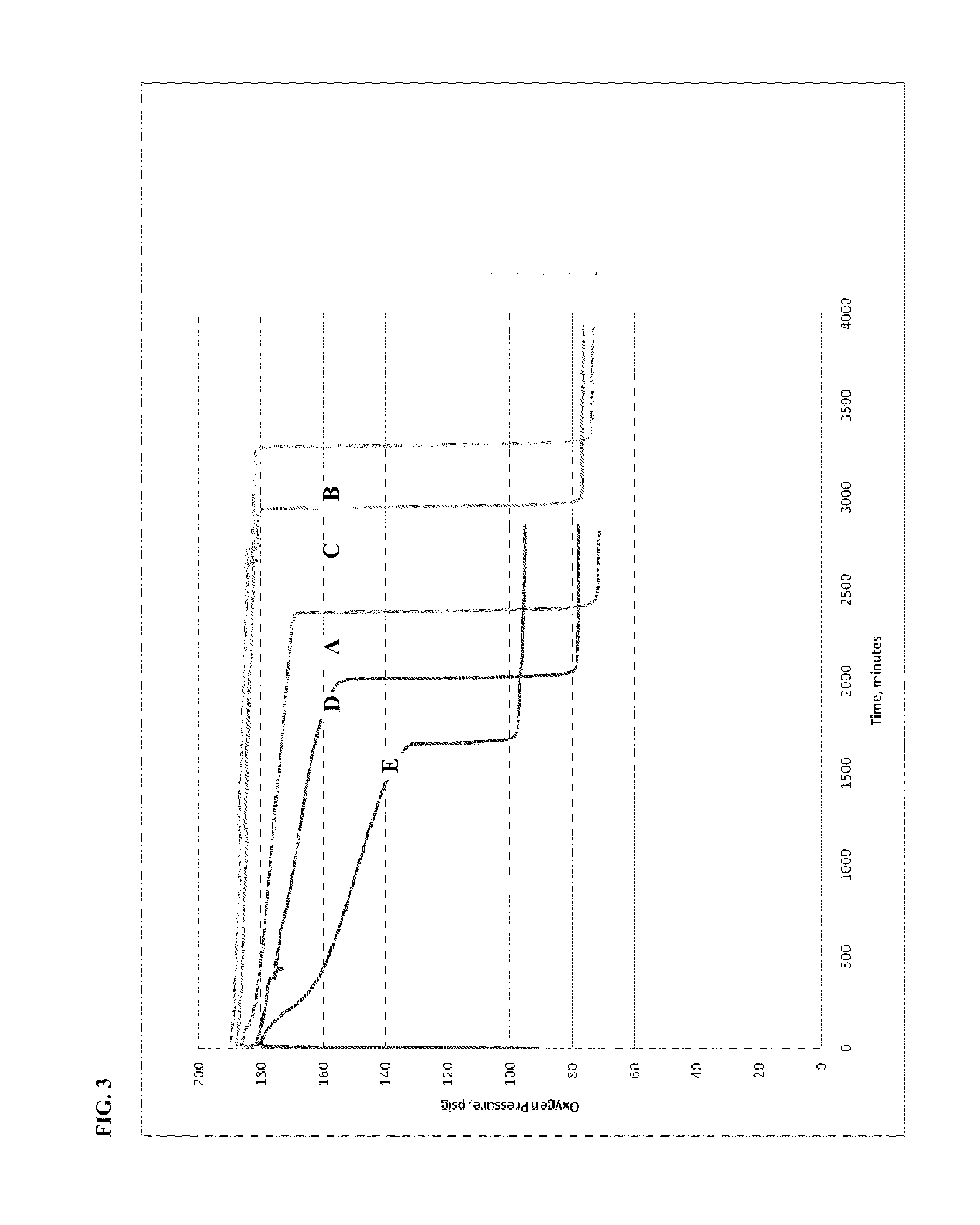Oligomerization of alpha olefins using metallocene-ssa catalyst systems and use of the resultant polyalphaolefins to prepare lubricant blends
a technology of alpha olefins and catalyst systems, which is applied in the field of metallocene-ssa catalyst systems for oligomerization of alpha olefins, can solve the problems of large amounts of expensive methyl aluminoxane, and achieve the effect of improving productivity
- Summary
- Abstract
- Description
- Claims
- Application Information
AI Technical Summary
Benefits of technology
Problems solved by technology
Method used
Image
Examples
example 1
Preparation of a Fluorided Silica-Alumina Activator-Support
[0509]The silica-alumina used to prepare the fluorided silica-alumina acidic activator-support in this Example was obtained from W.R. Grace as Grade MS13-110, containing 13% alumina, and having a pore volume of about 1.2 cc / g and a surface area of about 400 m2 / g. This material was fluorided by impregnation to incipient wetness with a solution containing ammonium bifluoride, in an amount sufficient to equal 10 wt % of the weight of the silica-alumina. This impregnated material was then dried in a vacuum oven for 8 hours at 100° C. The thus-fluorided silica-alumina samples were then calcined as follows. About 10 grams of the fluorided silica-alumina were placed in a 1.75-inch quartz tube fitted with a sintered quartz disk at the bottom. While the fluorided silica-alumina was supported on the disk, dry air was blown up through the disk at the linear rate of about 1.6 to 1.8 standard cubic feet per hour. An electric furnace arou...
example 2
Preparation of a Chlorided Alumina Activator-Support
[0510]Ten mL of Ketjen™ Grade B alumina was calcined in air for three hours at 600° C. After this calcining step, the furnace temperature was lowered to about 400° C., and a nitrogen stream was initiated over the alumina bed, after which 1.0 mL of carbon tetrachloride was injected into the nitrogen stream and evaporated upstream from the alumina bed. This gas phase CCl4 was carried into the bed and there reacted with the alumina to chloride the surface. This process provided the equivalent to about 15.5 mmol of chloride ion per gram of dehydrated alumina. After this chloriding treatment, the resulting alumina was white in color.
example 3
Preparation of a Fluorided Alumina Activator-Support
[0511]Alumina can be fluorided in the same manner as described in Example 1 for silica-alumina. The fluorided alumina can then be calcined and collected and stored under dry nitrogen, according to the Example 1 procedure, and then used without exposure to the atmosphere.
PUM
| Property | Measurement | Unit |
|---|---|---|
| Temperature | aaaaa | aaaaa |
| Temperature | aaaaa | aaaaa |
| Temperature | aaaaa | aaaaa |
Abstract
Description
Claims
Application Information
 Login to View More
Login to View More - R&D
- Intellectual Property
- Life Sciences
- Materials
- Tech Scout
- Unparalleled Data Quality
- Higher Quality Content
- 60% Fewer Hallucinations
Browse by: Latest US Patents, China's latest patents, Technical Efficacy Thesaurus, Application Domain, Technology Topic, Popular Technical Reports.
© 2025 PatSnap. All rights reserved.Legal|Privacy policy|Modern Slavery Act Transparency Statement|Sitemap|About US| Contact US: help@patsnap.com



